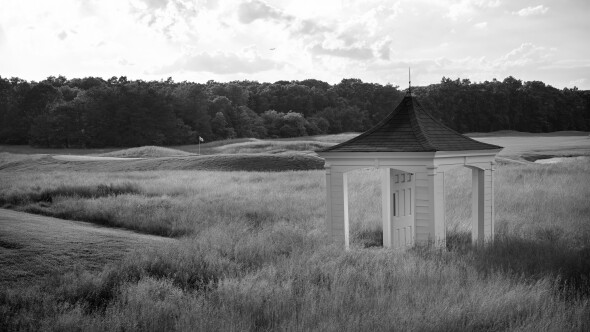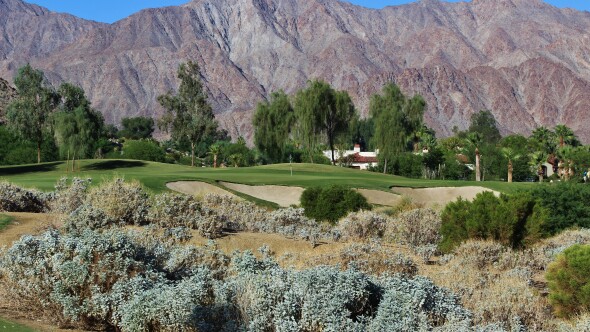“To my mind” – that is, the mind of Bill Bryson, an award-winning American travel writer who has lived most of his adult life in England – “the greatest reward and luxury of travel is to be able to experience everyday things as if for the first time, to be in a position in which almost nothing is so familiar it is taken for granted.”
Bryson is not a golfer, but his sentiment has never resonated so strongly with me as it did come the end of November. Over the course of three weeks, I found myself in four different cities – Washington, then Houston, then Hartford, then Phoenix – in each place blessed with the opportunity to do golf’s version of Bryson’s “everyday things”: playing these cities' municipal golf courses.
I blew into each course as an outsider, a tourist. Even Hartford, just 10 miles from my childhood home in the suburban town of Avon. There, I renewed my love affair with Keney Park, a pre-Great Depression course designed by Devereux Emmet and a city engineer and rejuvenated by Matt Dusenberry five years ago. The Sunday before Thanksgiving granted my father and me a lagniappe of a late-fall day: highs in the upper 50s, little wind and incredible turf conditions on a day when the course would typically already be shuttered for the winter in most years.

Less than 10 days later, I traded the bare oaks and elms of New England for the stiff cacti and scrub of the desert, smack-dab in the center of the Valley of the Sun. Papago Golf Club’s Billy Bell layout dates back to the 1960s and like the furniture and furnishings of its heyday, it is enjoying a resurgence. Current management – since 2018, Arizona State University – has done something of a magic trick. They have instituted upscale-feeling amenities (spiffy restaurant, crisp course conditions, a better-stocked pro shop than most private clubs) while keeping the place as affordable as possible for locals. Green fees for walkers never surpass $45, though out-of-towners may pay up to $180 – gladly, I might add. Teeing it up in the Monday Skins – a money game that has attracted everyone from PGA Tour pros to 100-shooters for more than 30 years – with three aspiring professional golfers is a top-tier golf highlight of 2021 for me.

Another city, another memorable muni experience, this one a two-fer. Invited by my friend Kyle to play in Tom Doak’s annual Renaissance Cup, we met up in Houston and immediately got some of the local flavor at Gus Wortham Golf Course, a City of Houston-owned, Houston Golf Association-operated gem. Renovated by Baxter Spann in 2019, it flashes flustering bunkering, smallish and undulating greens and some of the most pristine muni conditioning I’ve seen, all for $38 to walk. It was important to work off lunch: the best tacos I have ever had, courtesy of Taqueria Monchys around the corner, where three bean, rice and meat-packed flour pillows from heaven and a Dr. Pepper cost less than $10.

And that was just the appetizer in H-Town. The main course was Memorial Park, fresh off hosting the PGA Tour. How fresh? Grandstands were coming down as Kyle and I bowed out in the first round, freeing us up to enjoy the course all day the next day. Between its conditioning and Tom Doak's ingenious use of contour to confound and beguile golfers, Memorial Park showed us her absolute best. Locals are still warming to the redesign (golfers can be stubbornly change-averse), but it is clear that the decades will only polish this jewel of American municipal golf.

Which brings me back to Washington, D.C., and the first stop on my whirlwind muni golf tour: the National Links Trust Symposium on Municipal Golf. Two days of panels, presentations and side-discussions about the role these local courses can play in society relit a fire that the pandemic threatened to extinguish in those of us who have long loved to travel, to experience this great country in part through her golf courses.
On the third day, Symposium guests got a look at East Potomac Park Golf Course, one of three National Parks service golf facilities the National Links Trust is overseeing, with an eye toward restoration and long-term historic preservation. Originally laid out by Walter Travis, East Potomac sits on a unique piece of golfing ground: an island park in the middle of its namesake river. But for the buffer of water, the course is surrounded by the city. Very official-looking helicopters fly by all day, and several holes line up directly with the up-turned golf tee sculpture that is the Washington Monument.
Another spectacularly affordable tee time, East Potomac was filled with local golfers who, like us, got to enjoy the slightly scruffy but overall excellent conditions, including pristine greens that any private club would be lucky to boast, especially in November in the Mid-Atlantic.
Quality turf was a common thread among all five munis I saw, as was quality course architecture. Long believed to be only reserved for the privileged, both of these traits are seeping into golf’s most democratic places.
Between the COVID-spurred golf boom and an ongoing Munaissance that is bringing serious golfing virtues to local courses across the country, the “everyday life” experience embodied by this most foundational form of the game is gradually becoming more extraordinary. No one – not visitors, not locals – will take it for granted.

 Back
Back
























Comments (0)